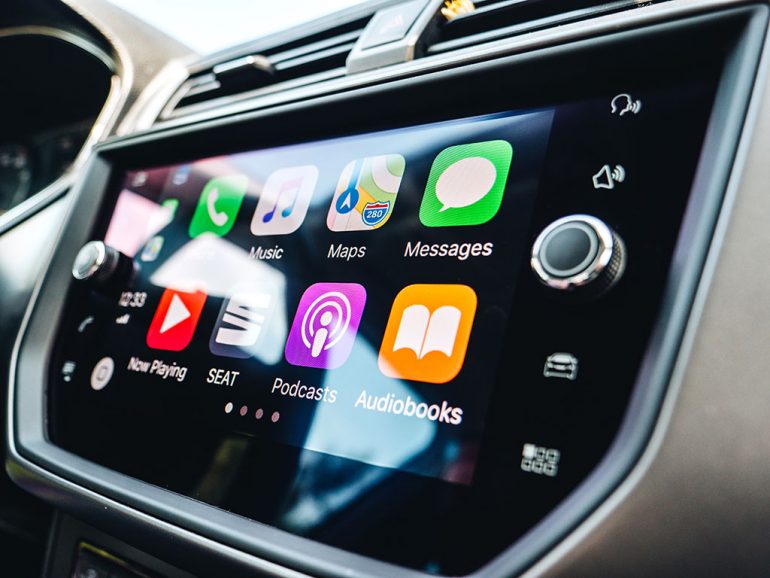
Just recently, General Motors (GM) announced its decision to part ways with Apple CarPlay and Android Auto, citing concerns about driver distraction. Tim Babbitt, GM’s head of product for infotainment development, pointed out that glitches in smartphone mirroring systems could potentially divert drivers’ attention towards their devices, undermining the objective of a less distracting infotainment system. While this move may seem rational, it raises the critical question: Does Apple CarPlay genuinely cause distractions when driving? Moreover, we honestly believe with GM parting ways with integration like Apple CarPlay will place them in a position for a money-grab for when they may choose to roll out subscription plans for smartphone integrations or use of certain infotainment connectivity features. While we don’t have concrete evidence of GM laying out plans to do such, we rest on such an educated guess.
However, a 2020 study by the UK road safety charity IAM Roadsmart adds weight to GM’s concerns. Surprisingly, the study suggests that using on-screen smartphone mirroring is more hazardous than manual texting or even driving under the influence of alcohol or drugs at the legal limit. The study found that voice prompts reduced distraction to some extent, but only marginally better than texting. This alarming conclusion challenges conventional wisdom about distracted driving. In essence, we think it is total BS!
GM’s decision to phase out Apple CarPlay and Android Auto in favor of a built-in Google interface demonstrates a commitment to addressing distraction concerns. The move allows drivers to download apps like Spotify or Tidal directly from the Play Store, enhancing the in-vehicle experience. The built-in Google Maps function provides range-based navigation and suggests charging stops for electric vehicles, offering a comprehensive ecosystem.
However, the transition to a Google-based system doesn’t entirely eliminate distraction, especially for Apple users. The system’s limitations that some have seen in recent reviews of new GM vehicles like the Blazer EV indicate that certain functions, like accessing Apple Music and Podcasts, remain incompatible with Google Automotive. This creates a dilemma for drivers who may resort to picking up their phones to perform these tasks, contradicting the initial purpose of reducing distraction.
It’s worth noting that most of the issues discussed are specific to Apple iOS users. The dominance of the Apple ecosystem, comprising 54% of all mobile phone users in the US, underscores the challenge faced by GM in expecting iPhone users to embrace non-endemic platforms outside of the familare iOS ecosystem entirely. With such a substantial market share, dismissing the needs of Apple users may be a shortsighted strategy.
Beyond the specifics of smartphone mirroring systems, there is a broader debate about whether any “infotainment” system inherently poses a distraction rather than a convenience. The IAM study, while comprehensive, does not account for built-in navigation systems, which could demand similar voice prompts and tactile inputs, potentially posing comparable distraction risks.
The issue of whether Apple CarPlay truly causes distractions when driving is complex and multifaceted. While GM’s move away from CarPlay and Android Auto aims to enhance driver safety, the challenges with the Google-based system highlight the difficulty of finding a foolproof solution. The widespread use of Apple devices and the inherent distraction potential of infotainment systems suggest that the quest for a perfectly safe driving experience continues, demanding a delicate balance between technology and driver focus. Fundamentally, we believe that since the masses are quite familiare with the use of their mobile devices, which are comprised of iPhones and Android-based smartphones, integrations like Apple CarPlay and Android Auto pose no more of a significant distraction than using the core functions of any infotainment system currently on the automotive market.

Darryl Taylor Dowe is a seasoned automotive professional with a proven track record of leading successful ventures and providing strategic consultation across the automotive industry. With years of hands-on experience in both business operations and market development, Darryl has played a key role in helping automotive brands grow and adapt in a rapidly evolving landscape. His insight and leadership have earned him recognition as a trusted expert, and his contributions to Automotive Addicts reflect his deep knowledge and passion for the business side of the car world.